Understanding the Dalit Community in India
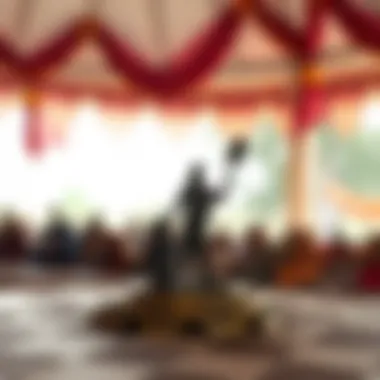
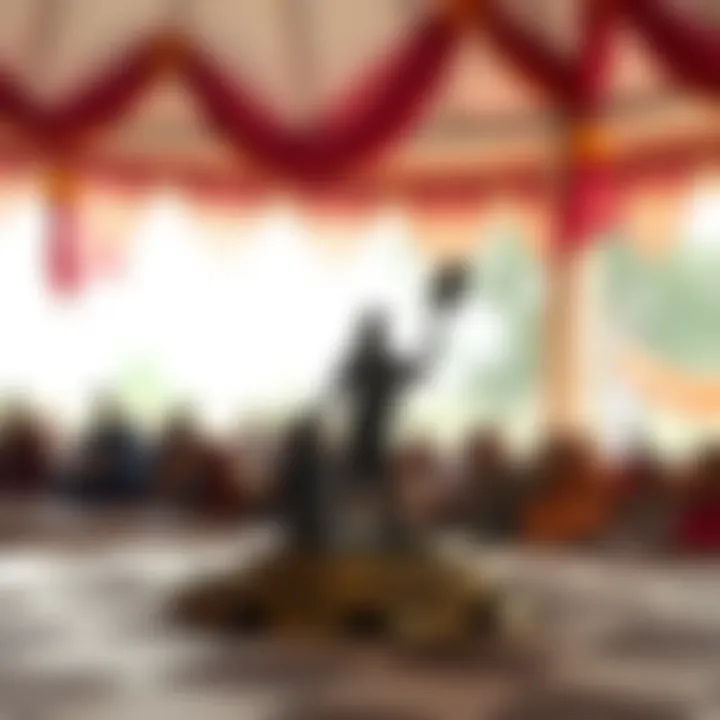
Intro
The Dalit community in India tells a story woven through centuries of struggle, resilience, and hardship. Often seen as the untouchables within the rigid caste system, Dalits have faced systemic discrimination that has profoundly affected their lives. Their experience is not just about social injustices; it is a broader reflection of one of the world's oldest social hierarchies. Understanding the complexities of the Dalit community requires delving into their historical roots, an exploration of their current social dynamics, and facing the modern-day challenges they continue to grapple with.
In this article, we examine various facets of the Dalit experience. This include discussions around the entrenched caste system, the ongoing fight for equality, and the movements working tirelessly for justice and representation. Importantly, we also spotlight significant changes and policies designed to uplift the Dalit population, presenting a nuanced perspective of their ongoing journey towards social justice and empowerment.
"Understanding the Dalit issue is not just about a single community but reflects deeper societal flaws that need addressing across the board."
"Understanding the Dalit issue is not just about a single community but reflects deeper societal flaws that need addressing across the board."
We aim to provide a comprehensive overview that will not only educate but also encourage further discourse on these pressing matters. As our society evolves, so does the conversation around equality and justice, making it essential to understand where we’ve come from, and crucially, where we need to go.
Preface to the Dalits
The Dalit community occupies a significant space in discussions about social justice and equality in India. For decades, this group has faced systemic oppression stemming from the deeply infused caste hierarchy. Understanding the Dalits is not merely an academic exercise; it encompasses the narrative of struggle, resilience, and the ongoing fight for rights that has significant implications in contemporary Indian society.
In this section, we will focus on two primary aspects: the definition of the Dalit community and the historical lineage from which they emerge. Savvy readers must appreciate that defining the Dalits goes beyond numbers or statistics; it involves recognizing their lived experiences, cultural practices, and the challenges they navigate in day-to-day life.
Furthermore, placing Dalits within a historical context is vital for comprehending how centuries of marginalization have shaped their existence. The historical lens provides insights into social dynamics and systemic inequalities that persist today, impacting Dalit's access to education, healthcare, and employment opportunities. In this scope, we lay the groundwork for a deeper exploration of relevant themes such as cultural identity, socioeconomic challenges, and contemporary political movements, all while aiming at promoting a more thorough understanding of this essential facet of Indian society.
"Understanding the Dalits is crucial to grasp the broader spectrum of social inequities that plague India today."
"Understanding the Dalits is crucial to grasp the broader spectrum of social inequities that plague India today."
In the subsequent sections, we will delve into defining the Dalit community and sifting through their historical pathways. It will illuminate the intricate relationship between caste and culture, thus enabling us to appreciate the nuances that define this community's identity.
The Caste System in India
The caste system in India is not just a relic of the past; it plays a critical role in shaping the socio-cultural landscape of the nation. Understanding this structure helps in grasping why the Dalit community has faced significant challenges over the decades. This section aims to demystify the origins, hierarchy, and impacts of the caste system, particularly as they relate to Dalits, who have historically been on the lower rungs of this social ladder.
Origins of the Caste System
The origins of the caste system are often linked to the ancient texts of Hinduism, mainly the Vedas. The initial division was not necessarily rigid; it was more of a division of labor among different groups within society. Over time, these classifications became more stringent and hierarchical. Various socio-political factors also cemented these divisions, increased social stratification, and made it difficult for individuals to move between these groups.
Structure and Hierarchy
A closer examination of the caste system reveals layers of complexity in its structure and hierarchy.
Caste Classes and Their Roles
The caste classes, typically divided into four main categories—Brahmins (priests), Kshatriyas (warriors), Vaishyas (traders), and Shudras (laborers)—each have defined roles to play within society. For instance, Brahmins, who have traditionally held the highest status, are seen as the bearers of knowledge and spiritual guidance. This stratification dictated not just the occupation of an individual but also their status and rights within society. The unique feature of the caste classes is that they dictate not merely professional roles but also social interactions, marriage prospects, and political power.
The disadvantage of this is evident for the Dalits, who do not occupy any of these traditional categories, often relegated to the status of untouchables, suffering discrimination and exclusion.
Social Stratification and Mobility
Social stratification refers to the hierarchical arrangement of different social groups. In a caste-based society, mobility often remains an elusive dream for those on the lower rungs. Though laws and policies have been implemented to encourage upward mobility, the ingrained prejudices and societal norms often obstruct these efforts. The key characteristic here is the lack of equality in opportunities and rights.
This hierarchy presents both advantages and disadvantages. On one hand, it offers those at the top a sense of security and privilege. On the other hand, it holds back those at the bottom, like Dalits, from experiencing social mobility or even basic equality.
Impact on Dalit Life
For Dalits, the caste system manifests in various adverse ways—systematic discrimination, economic disadvantage, and social exclusion. They often find themselves facing barriers in accessing education, healthcare, and even employment. Though there have been strides toward equality, the residue of caste-based social dynamics continues to hinder their progress. Various governmental schemes have tried to alleviate these issues, but societal attitudes are deeply rooted and slow to change.
Understanding the complex realities of the caste system is essential to comprehend the ongoing struggles that the Dalit community faces in India today. As we navigate through different facets of their experience, it becomes apparent that dismantling these entrenched societal divisions is key to fostering a more inclusive and equitable society.
Cultural Aspects of Dalit Identity
The cultural identity of the Dalit community serves as a complex tapestry woven from historical baggage and contemporary resilience. This aspect is vitally important; it provides a sense of belonging and helps initiate dialogue about cultural rights, equality, and justice. By understanding cultural aspects, one can grasp how traditions, languages, and expressions meld together, ensuring that the struggles of the Dalits are narrated through their unique perspectives.
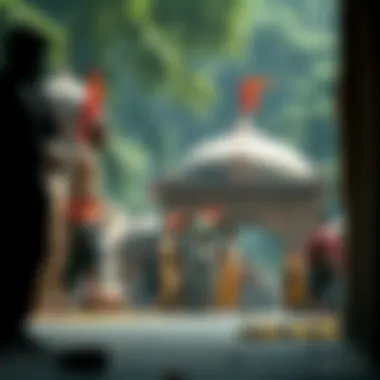
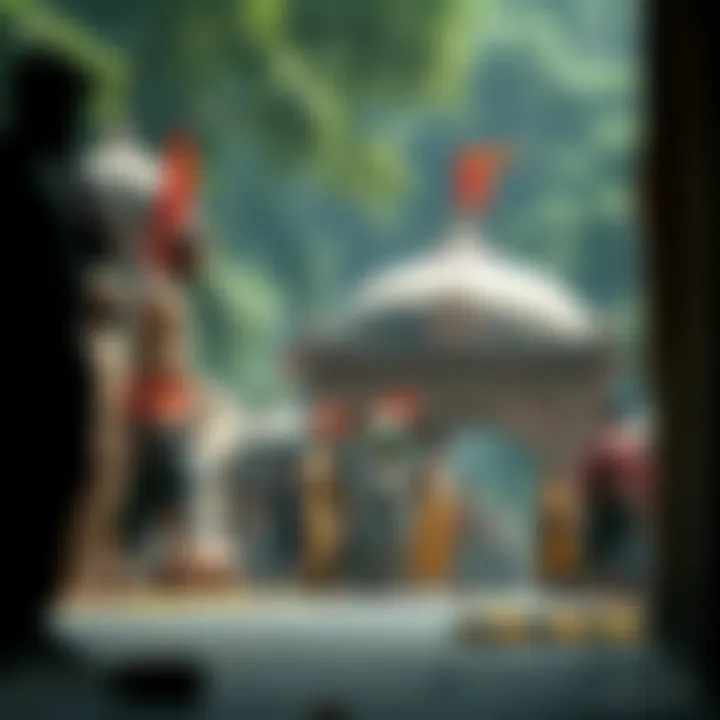
Traditions and Practices
Traditions among Dalits are as diverse as the myriad contexts in which they live. These practices are not merely remnants of the past; they inform contemporary life and provide frameworks for social organization and identity. For instance, traditional festivals often become sites of negotiation, where cultural norms are both celebrated and challenged.
Many Dalit communities celebrate festivals like Dasara and Holi, retaining their original significance while also integrating messages of solidarity and resistance. Bhandara—a community feast that fosters unity—exemplifies how food traditions can break down barriers. Yet, these celebrations are not without their contradictions. On one hand, they uphold community ties; on the other, they also reveal the existing tensions within broader society regarding caste and class.
Role of Language in Dalit Culture
Language plays a critical role in articulating Dalit identity. It serves not only as a medium of communication but also as a tool for asserting rights and challenging systemic injustices. Many Dalits speak languages such as Hindi, Tamil, or Marathi, but the revival and promotion of Dalit dialects and indigenous languages marks a push towards reclaiming heritage.
In literature and oral narratives, language becomes a means to convey experiences of marginalization, resistance, and aspiration. A focus on vernacular languages in education is essential for empowering younger Dalits; it validates their cultural identities and enriches broader dialogues in Indian society.
Art and Expression
Literary Contributions
Literary contributions from the Dalit community have carved out a unique space in Indian literature. The works often reflect the harsh realities of caste oppression, social marginalization, and the quest for dignity. Authors like B.R. Ambedkar and O.V. Vijayan have not only articulated experiences but have also challenged dominant narratives surrounding caste.
One unique feature of these literary endeavors is their ability to resonate with a wide audience while retaining the distinctly Dalit voice. The use of stark imagery and emotional depth makes the writings impactful. However, the question of accessibility arises; the socio-economic status of many Dalits means that their voices are often restricted to limited readerships. This dilemma underscores the need for broader engagement with these texts.
Performance Arts
Performance arts among Dalits encompass a rich array of traditions, from folk theater to dance and music. These art forms illuminate daily lives and challenges while providing an avenue for critique and celebration. Tamasha, a popular folk performance in Maharashtra, serves as a poignant example. It not only entertains but also educates audiences about Dalit issues, cleverly weaving social commentary into the fabric of vibrant performances.
Artistic expressions, such as folk songs, also allow Dalits to connect with their ancestry while resonating with contemporary audiences. Such performances can be a double-edged sword; while they highlight cultural richness, they also risk commodification, where the essence of the message might be lost in commercialization.
In summary, the cultural aspects of Dalit identity reflect resilience and creativity in the face of systemic oppression. The traditions, role of language, and art forms contribute significantly to the ongoing conversation about social justice, equality, and the need for a more inclusive society.
Socioeconomic Status of Dalits
The socioeconomic status of Dalits is a crucial topic as it encapsulates the intersection of historical injustices, systemic inequalities, and today's social dynamics. Understanding the economic and social position of Dalits informs us about the lingering impact of the caste system and the challenges they face. Their socioeconomic status affects various aspects of their lives, including access to education, employment opportunities, and health outcomes. It is pivotal to explore how these factors converge to create barriers affecting the Dalit community both on individual and collective levels.
Access to Education
Education is often heralded as the great equalizer, yet for many Dalits, it remains a distant dream rather than a reality. Various factors play a role in limiting access. Socioeconomic challenges often lead families to prioritize immediate financial needs over long-term educational aspirations. As a result, many Dalit children drop out of school, compounding the cycle of poverty.
Schools in areas predominantly inhabited by Dalits often lack essential resources, such as qualified teachers, infrastructure, and safe environments. Discrimination at educational institutions could deter Dalit students from pursuing their studies. However, initiatives like scholarships and affirmative action policies play an essential role in increasing enrollment rates. An alarming statistic from a recent survey shows that only about 50% of Dalit children complete primary education. Without adequate education, the opportunities for upward mobility remain severely limited.
Employment and Economic Participation
Employment is another significant area where Dalits face dire challenges. Many Dalits find themselves in low-paying, labor-intensive jobs, often relegated to menial positions with no job security or benefits. This situation is exacerbated by discrimination in hiring practices and a lack of access to skill development programs.
On the flip side, there are glimpses of progress with the rise of Dalit entrepreneurs who break the mold. By establishing businesses and gaining economic independence, they not only uplift their communities but also challenge existing stereotypes. Furthermore, government initiatives that promote Small and Medium Enterprises (SMEs) among Dalits are crucial. Yet still, the path to equal employment opportunities remains riddled with obstacles, primarily due to societal attitudes and economic disparities.
Health Disparities
Health disparities in the Dalit community illustrate yet another facet of their socioeconomic struggles. Access to healthcare is often limited for Dalits, many of whom may live in rural areas with inadequate medical facilities. The stigma associated with caste can extend to medical settings, leading to reluctance from healthcare providers to serve Dalit patients equitably and compassionately.
Notably, health education is also lacking, which contributes to poorer health outcomes. Issues such as malnutrition, maternal health complications, and high rates of communicable diseases are prevalent. The situation paints a stark contrast when compared to other communities, highlighting an urgent need for inclusive health policies.
Political Movements and Advocacy
Political movements and advocacy are central to understanding the challenges and aspirations of the Dalit community. These movements have sought not only to raise awareness about the injustices faced by Dalits but also to create a platform for their voices to be heard. The importance of this topic lies in its ability to highlight the struggle for rights and representation in a society where caste-based discrimination still often takes precedence.
Successful advocacy efforts have enabled Dalits to mobilize and assert their rights systematically, becoming an influential political force within India. These collective efforts are also essential for educating the broader populace on the need for social justice. By examining the historical trajectory and current landscape of Dalit movements, one can appreciate the depth of resolve and unity within the community, often in the face of relentless obstacles.
Historical Background of Dalit Movements
Dalit movements in India trace their roots back to the mid-20th century when the social, political, and economic oppression of Dalits became increasingly palpable. The legacy of colonial rule and the continuation of traditional caste hierarchies laid the groundwork for an uprising against systemic injustices. Movements like the Scheduled Caste Federation and the All India Depressed Classes Federation emerged during this time, emphasizing the need for political recognition and rights.
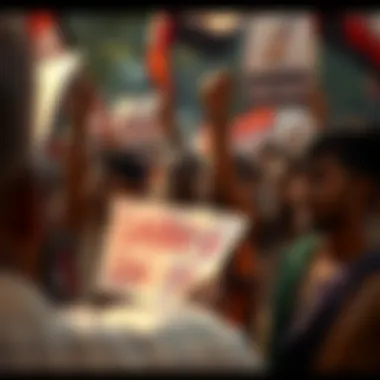
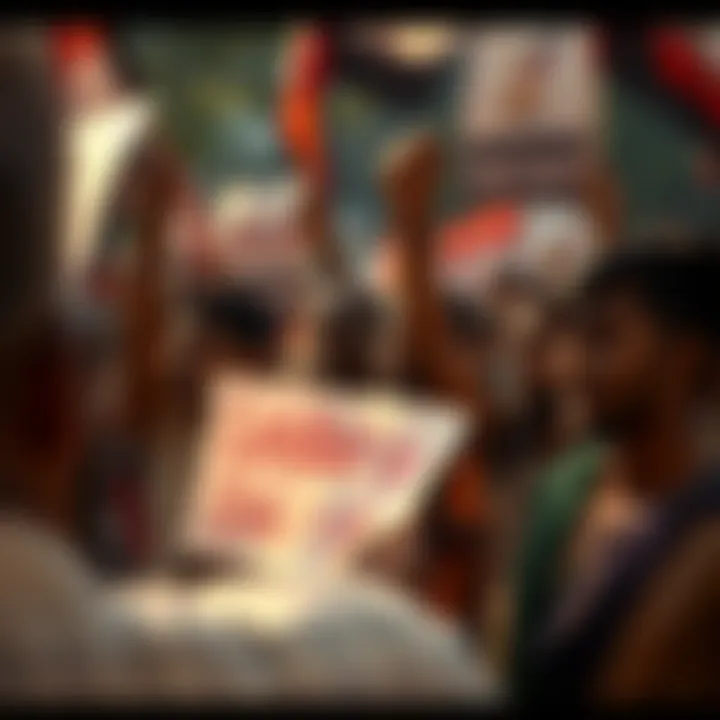
The struggle became particularly notable after India's independence in 1947, with the framing of the Constitution aiming to safeguard the rights of Dalits. Leaders like Dr. B.R. Ambedkar, who himself was a Dalit, played a pivotal role in ensuring that provisions for affirmative action, like reservations in education and employment, were entrenched in policy. This historical context sets the stage for a better understanding of Dalit political identity today, which continues to evolve while remaining resistance-driven.
Significant Leaders and Their Contributions
Dr. B.R. Ambedkar
Dr. B.R. Ambedkar remains the most recognized face of Dalit rights' advocacy in India. His cornerstone work in drafting the Indian Constitution is a testament to his commitment to equality and justice. Ambedkar's unique feature was his comprehensive understanding of social and legal systems, which allowed him to articulate the rights of marginalized communities effectively. His strong emphasis on education as a tool for empowerment resonates deeply within the Dalit community.
Moreover, Ambedkar's conversion to Buddhism in 1956 symbolized a shift towards social empowerment and away from the caste system that oppressed him. His legacy not only inspires current movements but also serves as a benchmark for measuring progress towards social equality.
"A great man is different from an eminent one in that he is ready to be the servant of society." – Dr. B.R. Ambedkar
"A great man is different from an eminent one in that he is ready to be the servant of society." – Dr. B.R. Ambedkar
Other Notable Figures
Apart from Ambedkar, various leaders have significantly impacted Dalit movements throughout history. Figures like Kanshi Ram, founder of the Bahujan Samaj Party, tailored political strategies specifically aimed at uplifting Dalits and other marginalized groups. His emphasis on grassroots mobilization led to a more robust representation of Dalits within legislative frameworks.
Another pivotal figure was Mayawati, who, as the chief minister of Uttar Pradesh, shattered many glass ceilings for women from marginalized backgrounds. Her leadership within the Bahujan Samaj Party has contributed to prioritizing Dalit issues at the state level and provided a template for future leaders.
These leaders' strategies have played a crucial role in bolstering awareness and fostering a sense of identity among Dalits, highlighting how their unique approaches crafted a stronger political narrative and community cohesion.
Current Dalit Activism
Today, Dalit activism is increasingly vibrant, characterized by a blend of traditional protest methods and modern advocacy techniques. Social media serves as a powerful tool for mobilizing support and spreading awareness, with various campaigns addressing specific issues like caste-based violence and discrimination. Activists often leverage platforms such as Facebook and WhatsApp not only to share stories but also to advocate for policy changes.
Dalit organizations are also increasingly involved in coalition-building with other marginalized groups, highlighting intersectionality in the struggle against oppression. These collaborations aim not only to advance Dalit rights but to create a broad-based movement that resonates with various social issues across India.
Legal Framework and Policies
The significance of understanding the legal framework and policies related to the Dalit community cannot be overstated. These laws and regulations serve as the bedrock for ensuring that Dalits are treated with dignity and given equitable opportunities in society. While the Constitution of India provides several provisions aimed at protecting the rights of Dalits, the efficacy of these laws often hinges on their enforcement and public perception. A comprehensive view of this framework illuminates the gaps and triumphs in the struggle for justice faced by Dalits.
Constitutional Provisions for Dalit Rights
The Constitution of India is a pivotal document that lays down the fundamental rights of all Indian citizens, including provisions specifically aimed at protecting the rights of Dalits. Article 17 of the Constitution states that "Untouchability" is abolished, and its practice in any form is prohibited. This marks a critical step in dismantling the caste-based discriminations that have plagued Indian society for centuries. Additionally, provisions for affirmative action, such as reservations in education and employment, aim to uplift Dalits, providing them access to opportunities that have historically been out of reach.
Furthermore, the Scheduled Castes and Scheduled Tribes (Prevention of Atrocities) Act, 1989 offers further legal protection to Dalits from discrimination and heinous crimes. The overall thrust of these constitutional provisions is to ensure that Dalits can participate fully and equally in the social, economic, and political life of the nation.
Government Initiatives and Schemes
Over the years, the Indian government has launched various initiatives aimed at improving the lives of Dalits. Key programs include the National Scheduled Castes and Scheduled Tribes Hub, which provides financial assistance and support for entrepreneurship among Dalits. Also, several scholarships and affirmative action policies empower Dalit students to access quality education.
Some notable schemes are:
- Pradhan Mantri Awas Yojana: A housing scheme to provide affordable housing to the poor, where Dalits can benefit.
- Integrated Child Development Services (ICDS): Focuses on health, nutrition, and education for underprivileged children, including those from Dalit backgrounds.
- Skill India Program: Aims to enhance skills among the youth, helping Dalits obtain better job opportunities.
Such programs underline the government's commitment to bridging the socioeconomic divide, although the effectiveness and reach of these initiatives vary widely across regions.
Challenges in Enforcement
Despite robust legal frameworks and government initiatives, enforcing these rights often faces practical hurdles. One significant challenge is the societal attitudes that persist in many areas, where caste-based discrimination still lingers. Moreover, there is frequently a lack of awareness among Dalits about their rights and available legal remedies, leading to underreporting of incidents of abuse and discrimination.
Law enforcement agencies can sometimes be reluctant to intervene in matters involving caste, viewing them as sensitive social issues rather than violations of legal rights. This attitude can result in slow or insufficient responses to complaints filed under laws designed to protect Dalits.
"Legislation alone cannot eradicate the deeply rooted stigmas; it requires a change in the social fabric and mindset of the people."
"Legislation alone cannot eradicate the deeply rooted stigmas; it requires a change in the social fabric and mindset of the people."
In summary, while the legal provisions and government schemes are critical, the real challenge remains in ensuring that these laws are not merely paper tigers, but instruments of real change in the lives of Dalits. The path forward hinges on widespread education, sensitization, and persistent advocacy for justice and equality.
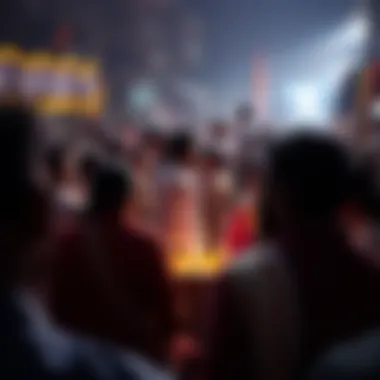
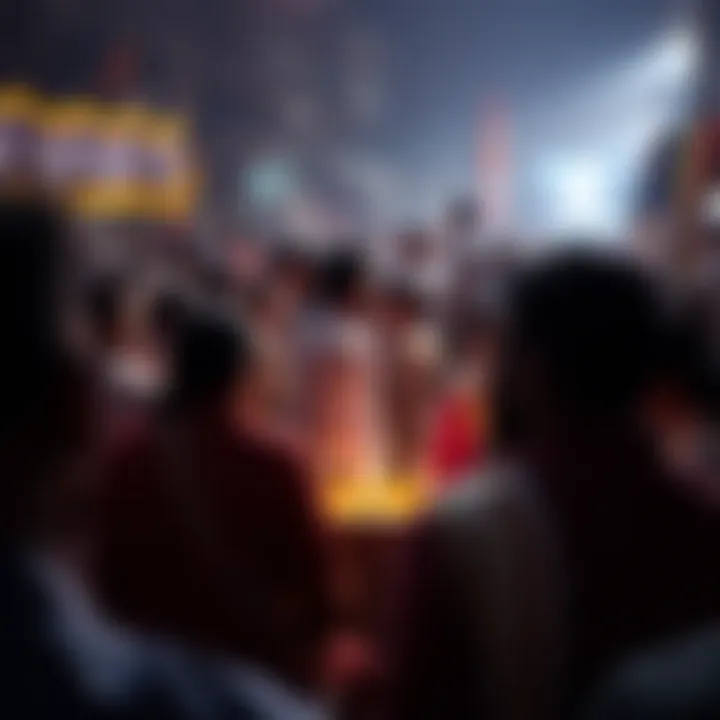
Contemporary Issues Facing the Dalits
Understanding the contemporary issues facing the Dalit community in India is crucial for grasping the numerous obstacles this group encounters today. While many debates center around historical injustices, the present landscape is equally troubling. Social stigma and discrimination, violence, and how the media shapes perceptions play pivotal roles in the ongoing struggles of the Dalits. Addressing these issues not only highlights the need for protective measures but also fosters empathy and awareness among the broader public.
Social Stigma and Discrimination
Social stigma and discrimination are interwoven into the day-to-day lives of Dalits in India. This stigma often manifests in subtle ways, such as discriminatory remarks or exclusion from social gatherings.. Even places of worship or public spaces can echo the prejudices surrounding caste. The belief that some castes are inherently superior manifests not just in attitudes but also in behavioral patterns, leading to widespread marginalization.
This stigma can lead to limited opportunities. For instance, when Dalits seek employment, they might find that their caste is known to potential employers, causing them to face biases that are often unspoken. Despite laws in place to protect their rights, the social fabric of society frequently overrides legal assurances, forcing Dalits to navigate a minefield of prejudices daily.
The impact of such stigma extends beyond individual experiences; it holds communities back. When people are defined by their caste rather than capability, overall societal growth suffers. Improving education and awareness about the contributions of Dalits could break down these barriers, aiding in the journey toward a more just society.
Violence and Atrocities against Dalits
Violence and atrocities against Dalits remain a dark undercurrent in Indian society. Reports of brutal violence—ranging from physical assaults to murders—often surface in the media, yet many incidents go unreported. Such acts are both a symptom and a perpetuator of the deeply ingrained caste system.
One notable horror story involves the incidence of manual scavenging, where Dalits are tasked with cleaning human waste. Not only is this work hazardous, but those who perform it often face violence and societal ostracization simply due to the nature of their labor. This is a stark reminder of the barbaric attitudes that persist.
A concerted effort from law enforcement, civil society, and community leaders is essential in addressing this crisis. Creating awareness and promoting dialogue about these issues is crucial to stimulate outrage and action from the broader community.
The Role of Media in Shaping Perceptions
Media plays a critical role in shaping perceptions about the Dalit community. From news reports to entertainment, the portrayal of Dalits in media can influence societal attitudes greatly. Unfortunately, many narratives perpetuate stereotypes, reinforcing negative perceptions about Dalits.
Only a handful of films and documentaries touch upon the realities faced by Dalits, often romanticizing their struggles or portraying them as mere caricatures. Conversely, when media shines a light on issues such as social injustices or violence, it can foster greater understanding and empathy. For example, the rise of social media has created new platforms for Dalits to share their stories and advocate for their rights.
"The media has the power not just to reflect society but to shape it. By telling honest stories about Dalits, we can challenge misconceptions and spark change.”
"The media has the power not just to reflect society but to shape it. By telling honest stories about Dalits, we can challenge misconceptions and spark change.”
Yet it's not just about representation. It's also about the responsibility of consumers of media—how audiences react and engage with content can drive shifts toward better understanding of Dalit issues.
As we move forward, it is imperative that both traditional and social media take a responsible approach. By amplifying Dalit voices and stories, the media can contribute to breaking the cycle of silence and complacency that has characterized so much of India’s history.
Future Perspectives for the Dalit Community
The conversation around the future perspectives for the Dalit community is not just crucial; it is vital for shaping a roadmap toward a more equitable society in India. As we look ahead, it becomes essential to consider the opportunities that lie ahead for economic upliftment, the necessity for educational reforms, and the vision of an inclusive society. Each of these aspects can significantly alter the lived experiences of Dalits and can lead to meaningful societal transformations.
Potential for Economic Development
In terms of economic development, the prospects for Dalits are increasingly promising. Historically, Dalits have been stymied by systemic barriers that restricted their access to meaningful employment and economic resources. However, the situation is beginning to change with various government initiatives aimed at promoting entrepreneurship within this community.
- Small business loans, often subsidized, are being made available to Dalit entrepreneurs. This is not just financial backing; it is an opportunity to build a sustainable enterprise from the ground up.
- Skill development programs tailored for Dalits are being introduced in technical fields, aiming to bridge the gap in employment that has long affected this community.
- There are increasing partnerships between NGOs and private sectors that focus on providing vocational training, thus equipping individuals with skills that are in high demand.
It is essential for policies to focus on empowerment rather than merely welfare. This approach can help Dalits to transition from a position of vulnerability to one of economic strength.
The Need for Educational Reforms
Education is a linchpin for progress. For the Dalit community, the call for educational reforms is critical for long-term socio-economic transformation. The current educational landscape is dotted with challenges, including dropout rates and inadequate facilities, which disproportionately affect Dalit children.
- Integrating inclusive curriculums that represent the history and contributions of Dalits can foster a sense of belonging among students from this community.
- Scholarship programs specifically for Dalit students can combat economic barriers, enabling access to higher education which can open doors to better job opportunities.
- Schools should focus more on creating an environment that is free from caste-based discrimination, making education a level playing field.
Education should not just be about literacy; it should serve as a tool of empowerment, enabling Dalits to advocate for their rights and participate fully in society.
Envisioning an Inclusive Society
Looking towards the horizon, envisioning an inclusive society is fundamental for the Dalit community. Inclusion is about more than just policies; it is about reshaping societal attitudes and values.
Creating avenues for significant representation in politics, business, and culture can reduce stigma and foster understanding.
- Encouraging community dialogues where both Dalits and non-Dalits can share experiences can help diminish social barriers.
- Representation in media is key. Positive portrayals of Dalits in films, literature, and other forms of art can challenge stereotypes and reshape public perceptions.
- Lastly, grassroots movements must sustain their momentum to hold authorities accountable for implementing policies that protect and uplift Dalits.
An inclusive society is one where the contributions of every individual, regardless of caste, ethnicity, or background, are celebrated and valued.
An inclusive society is one where the contributions of every individual, regardless of caste, ethnicity, or background, are celebrated and valued.
In summary, while the Dalit community continues to face obstacles, the future holds promise. With concerted efforts aimed at economic development, educational reforms, and strong advocacy for inclusivity, we can envision a society where equality is not merely a goal but a lived reality for all.







